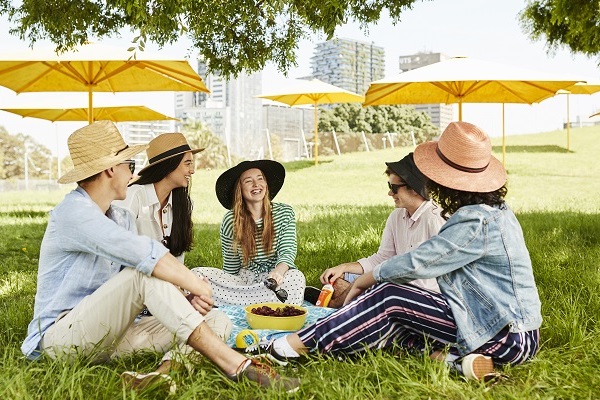
No one likes to see a young person with bad sunburn – especially one severe enough to warrant a trip to hospital. Sunburn on a child or adolescent means something has gone wrong in our duty of care to protect the younger generation. It’s a condition that’s particularly hard to stomach given sunburn is almost always preventable. It simply should never happen.
But sadly, it does. And according to our latest data, it’s teenagers that are the fairing the worst.
Last summer, one in two Victorian hospital presentations for sunburn were children aged 0–19 years. Concerningly, of the total 177 sunburn hospital presentations reported in Victoria, almost one in three were older children and teenagers aged 10–19 years.
Teenagers notoriously present a challenge when it comes to public health messaging.
Their choices are impacted by opinions of their peers and what they perceive as social norms. And if what is perceived to be accepted and trendy doesn’t align with the public health message then it can fall on deaf ears.
Teens also tend to be focused on the here and now, so asking them to risk their perceived social credibility with white skin and a broad-brim hat to reduce their chances of skin cancer down the track is a hard sell.
But the challenges are not insurmountable. Similar barriers were overcome with smoking – and we owe it to our kids to do the same with UV.
Head of SunSmart, Heather Walker said the approach to tackling sun protection with teens needs to be a collaborative one with a focus on making the message relevant to teens now.
“Families and schools need to remind young people that what they do today in terms of UV exposure, can have a significant impact on their risk of skin cancer down the track. Over time, the damage adds up – the more you’re exposed, the greater your risk. Establishing good sun protection habits early on is critical for that reason.”
Ms Walker said a sun protection policy at school helps to protect students during the day when the UV is highest, but it also helps to support students and staff and show how seriously sun protection should be taken. This is where many secondary schools are falling down.
“While around 90% of Victorian primary schools are members of the SunSmart program, secondary schools are lagging behind. Our research shows few secondary schools have best-practice sun protection policies in place which means sun protection isn’t taken seriously. For the sake of our teens’ health, UV safety should be considered non-negotiable – as is smoking, seatbelt wearing and bike helmets.
“Schools play a big role in influencing attitudes to sun protection. The absence of a UV policy including a mandate for hat wearing sends a message to students that sun protection is not essential which couldn’t be further from the truth. UV exposure is just as dangerous for students at secondary school as it is for children during the early years.
Ms Walker said, the recent data on sunburn presentations to emergency departments shows us we need to do better with teens both at home and at school.
"It’s on all of us to lead by example and help protect the generation coming through from one of the most preventable cancers,” Ms Walker said.
SunSmart recommends asking your teen’s school about their sun protection policy and how you can support them to be SunSmart. Parents can also get advice and tips on talking to your teen about sun protection.